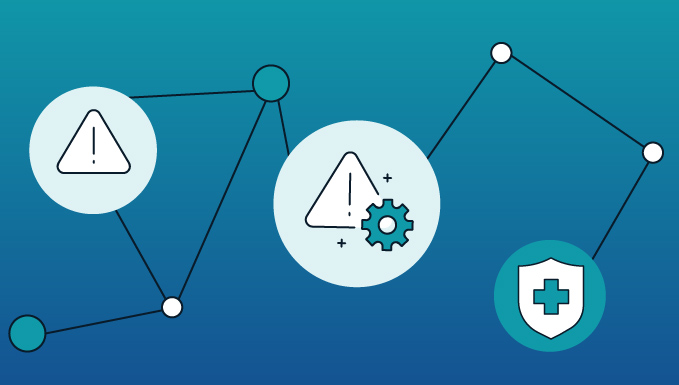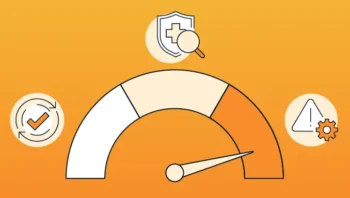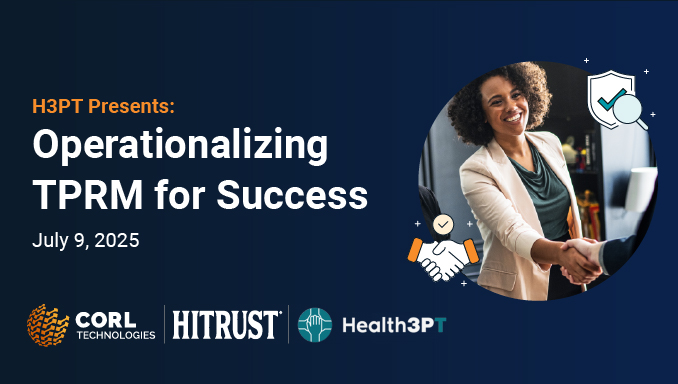BlogCompliance
Unlocking Vendor Assurance: A Deep Dive into CORL Technologies’ Assessment Suite
5 Minute Read
Read Unlocking Vendor Assurance: A Deep Dive into CORL Technologies’ Assessment SuiteTPRM
By CORL Technologies | August 14, 2025

In 2025, healthcare’s digital ecosystem is more interconnected than ever. From AI-powered diagnostics to cloud-first platforms and connected medical devices, providers depend on a vast network of suppliers to deliver safe, effective care. The upside is rapid innovation. The downside is an expanded attack surface and complex compliance landscape that can be difficult to manage.
Healthcare supplier risk management has moved from a “check-the-box” compliance task to a critical operational priority—one that impacts patient safety, regulatory compliance, and organizational resilience.
Below are the ten biggest supplier risk management challenges facing healthcare organizations this year—and practical ways to address them.
The challenge: New SaaS and AI tools are adopted at a rapid pace, sometimes bypassing procurement and security processes. Shadow suppliers and fourth parties can quietly increase exposure.
How to get ahead: Centralize your supplier inventory, require intake through a single process, and use external scanning to discover unknown or unapproved suppliers. Tier suppliers based on data sensitivity and criticality so higher-risk relationships receive deeper due diligence.
The challenge: Annual questionnaires or certifications can become outdated in months, while cyber threats evolve daily.
How to get ahead: Pair due diligence with continuous monitoring. Track meaningful changes—exposed services, domain hygiene, breach chatter—and integrate alerts into a clear remediation workflow.
The challenge: HIPAA/HITECH, HICP/405(d), NIST CSF 2.0, HITRUST, PCI DSS, state privacy laws, and evolving HHS cybersecurity performance goals create an ever-changing compliance environment.
How to get ahead: Standardize on a common control framework and map requirements once. Automate evidence requests and reuse artifacts across multiple assessments to improve efficiency.
The challenge: AI capabilities are increasingly embedded into clinical and operational tools. Data handling, model training, and PHI safeguards are often unclear.
How to get ahead: Add AI-specific controls to your healthcare supplier risk management program, including data minimization, model transparency, and clear contractual commitments on data use and retention.
The challenge: Many suppliers rely on the same cloud providers, amplifying the impact of outages or security misconfigurations. Responsibility for security is sometimes misunderstood.
How to get ahead: Request cloud security baselines, validate configurations, and track concentration risk across your supplier portfolio.
The challenge: Supplier-managed devices in clinical networks often have long patch cycles and limited vulnerability visibility.
How to get ahead: Require software bills of materials (SBOMs) and vulnerability disclosure processes. Segment legacy devices and document compensating controls in supplier agreements.
The challenge: Complex integrations, APIs, and data exchange agreements can create unmonitored or excessive data sharing.
How to get ahead: Maintain a single source of truth for all BAAs/DUAs linked to suppliers. Conduct annual data-use reviews and test API security regularly.
The challenge: When a supplier is breached, delays in communication can hinder response and impact patient care.
How to get ahead: Create a supplier incident playbook with escalation paths, notification timelines, and defined recovery objectives. Run tabletop exercises with critical suppliers.
The challenge: Leadership teams want to see measurable results from healthcare supplier risk management investments.
How to get ahead: Report metrics that focus on outcomes, such as remediation timelines, reduction in critical findings, and trends in supplier risk posture over time.
The challenge: Many healthcare security teams lack the time and resources to manage hundreds or thousands of suppliers manually.
How to get ahead: Adopt a tiered supplier assessment model, automate intake and follow-ups, and leverage specialized partners to extend capacity and expertise.
Effective healthcare supplier risk management requires more than checklists—it demands continuous visibility, clear prioritization, and a consistent process for remediation. A strong program blends due diligence with ongoing monitoring, focuses on the suppliers that matter most to clinical and operational outcomes, and provides leadership with transparent reporting.
At CORL Technologies, we work exclusively with healthcare organizations to design and operate supplier risk management programs that scale. Our healthcare-specific expertise, proven playbooks, and human-in-the-loop model ensure you get actionable results—not just assessment reports.
What we deliver:
Strengthen your healthcare supplier risk management program now.
Contact CORL Technologies to explore how we can help you reduce supplier risk while freeing your internal teams to focus on patient care and strategic priorities.
 CORL Technologies
CORL Technologies
CORL transforms TPRM chaos into clarity
CORL is a leading provider of vendor risk management solutions for the healthcare industry. CORL gets results by scaling organizational and vendor risk programs through our healthcare vendor risk clearinghouse solution, dashboard reporting that business owners can understand, and proven workflows that drive measurable risk reduction. CORL accelerates the speed of vendor risk assessments and holds vendors accountable for remediating risk exposures.
Related Posts
BlogCompliance
By CORL Technologies | June 24, 2025
5 Minute Read
Read Unlocking Vendor Assurance: A Deep Dive into CORL Technologies’ Assessment Suite
BlogTPRM
By CORL Technologies | May 19, 2025
2 Minute Read
Read More Than a Checkbox: Why Right-Sizing Vendor Risk Remediation Is the Key to Smarter TPRM
BlogCompliance
By CORL Technologies | April 23, 2025
2 Minute Read
Read The Power of Human + AI: CORL’s Differentiated Approach to Healthcare Risk Management
Webinars
WEBINAR H3PT Presents: Operationalizing TPRM for Success Join us for a focused, real-world conversation with healthcare security and risk leaders tackling today’s most pressing TPRM challenges. This session will bring together a small panel of experts for an insightful discussion on how to strengthen third-party risk programs in an evolving threat landscape. This won’t be […]